Alright folks, here’s the scoop. Diving into Korean cooking and hit a snag without Korean radish?
You’re certainly not alone. These crisp, slightly sweet veggies are key in dishes like kimchi and stews, yet grabbing them outside Korea can be tricky.
Good news, we’ve got backups that are probably chilling in your fridge or local grocery right now.
Each brings its own zing to the table, ensuring your culinary creation doesn’t miss a beat.
From the peppery bite of daikon to the humble crunch of jicama, we’re about to unveil some kitchen champions that’ll save your dish in a pinch.
Grab your aprons, and let’s make magic happen without our star veggie.
What is Korean Radish?

Korean radish also called mu, is a type of winter radish popular in Korean cuisine.
It has a long, white root and a milder flavor than other types of radishes.
Daikon is often used in kimchi, a traditional Korean dish of fermented vegetables.
It can also be pickled, stir-fried, or added to soups and stews.
In addition to its culinary uses, daikon is also known for its health benefits.
The roots are high in fiber and vitamins C and B6, and they have been shown to aid digestion and promote gut health.
Korean radish is an essential ingredient in many Korean dishes, and it can also be a healthy addition to any diet.
The 5 Best Substitutes for Korean Radish
Several substitutes will work in recipes for those who don’t have easy access to a Korean grocery store or those who simply can’t find Korean radish.
| Substitute | Key Characteristics | Substitute Ratio |
|---|---|---|
| Daikon | Mild, crisp texture | Use an equal amount of daikon as a substitute for Korean radish |
| Red Radish | Peppery bite, crunchy texture | Use an equal amount of red radish as a substitute for Korean radish |
| Indian Radish | Earthy flavor, crunchy texture | Use an equal amount of Indian radish as a substitute for Korean radish |
| Turnips | Subtle sweetness, firm texture | Use an equal amount of turnips as a substitute for Korean radish |
| Cabbage Heart | Mild, slightly sweet flavor | Use an equal amount of cabbage heart as a substitute for Korean radish |
When it comes to Korean cuisine and you need substitutes for Korean radish, consider these five options:
1 – Daikon
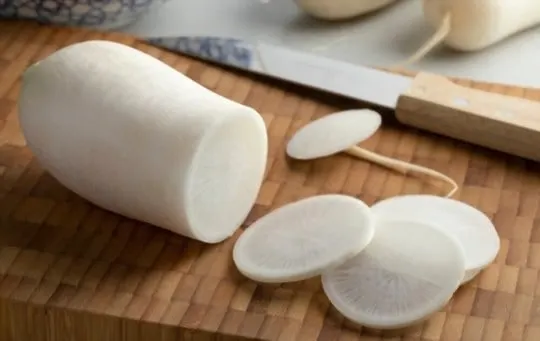
Daikon (Raphanus sativus) is a radish that is often used in Asian cuisine.
It has a long, white root and a mild, slightly sweet flavor.
Daikon is rich in vitamins and minerals, and it has numerous health benefits.
For example, it can help to boost the immune system, improve digestion, and reduce inflammation.
Additionally, daikon is a low-calorie food high in fiber, making it a great choice for those trying to lose weight.
Whether you shred it into your favorite stir-fry or enjoy it raw as a healthy snack, daikon is a delicious and nutritious root vegetable that deserves a place in your diet.
To substitute Korean radish with daikon, use an equal amount of daikon in your recipes. For example, if a recipe calls for 1 cup of Korean radish, use 1 cup of daikon instead.
2 – Red Radish
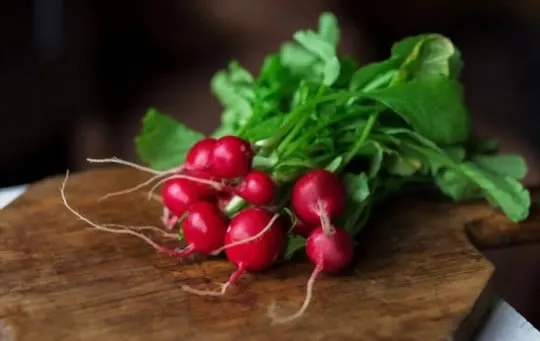
Like most radishes, red radishes are a root vegetable low in calories but high in nutrients.
They are an excellent source of vitamin C and contain potassium, magnesium, and calcium.
Additionally, red radishes are a good source of fiber, which can help regulate digestion.
Red radishes have a distinct peppery flavor that adds zest to salads and other dishes.
They can also be eaten raw, cooked, or pickled.
When choosing red radishes, look for ones that are firm and free of blemishes.
Avoid radishes that are soft or have brown spots.
Store radishes in the refrigerator and use them for the best flavor within a week.
Use an equal amount of red radish as a substitute for Korean radish in your recipes.
3 – Indian Radish
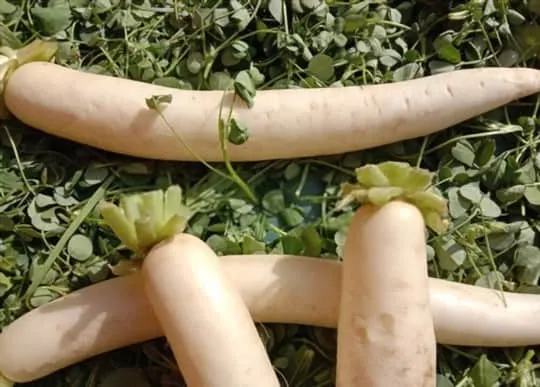
The Indian radish, also known as the daikon radish, is a long, white root vegetable that originated in Asia.
It has a milder flavor than traditional red radishes, and its firm flesh makes it ideal for slicing and shredding.
In addition to being eaten raw, Indian radishes can be cooked in various ways.
They are often used in stir-fries or added to soups and stews.
When cooked, Indian radishes become softer and slightly sweeter in flavor.
Indian radishes are a good source of vitamins C and B6 and potassium and magnesium.
They can be found in most supermarkets year-round.
Use an equal amount of Indian radish as a substitute for Korean radish in your recipes.
4 – Turnips
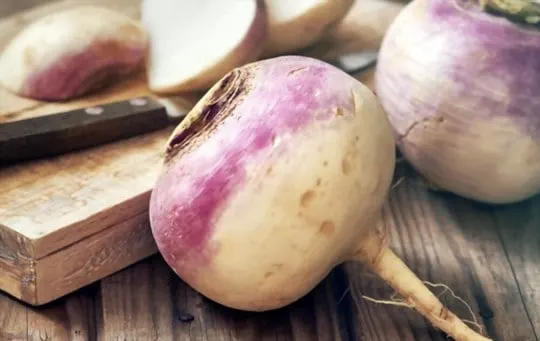
Though often overlooked, turnips are a versatile and delicious root vegetable.
They can be eaten raw or cooked, and their mild flavor pairs well with a variety of other ingredients.
Turnips are also an excellent source of vitamins and minerals, including Vitamin C, potassium, and calcium.
In addition, turnips are low in calories and fat, making them a healthy addition to any diet.
Though they are often thought of as being bland, turnips can be a delicious and nutritious part of any meal.
Use an equal amount of turnips as a substitute for Korean radish in your recipes.
5 – Cabbage Heart
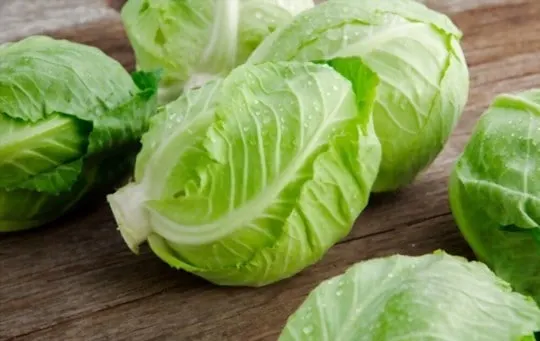
A cabbage heart is a type of edible flower that belongs to the Brassica family, including broccoli, cauliflower, and Brussels sprouts.
The cabbage heart is the unopened flower of the plant, and its buds are sometimes referred to as “cabbage roses”.
When cooked, cabbage hearts are tender and have a mild flavor similar to that of artichokes.
They can be steamed, boiled, or sauteed and are often used as a decoration on salads or as a garnish for soup.
Cabbage hearts are a good source of vitamins A and C and fiber and potassium.
Use an equal amount of cabbage heart as a substitute for Korean radish in your recipes.
Conclusion
In conclusion, Korean radish is a versatile and delicious vegetable used in many different dishes.
These vegetables have a similar taste and texture to Korean radish, making them perfect for recreating your favorite dishes.
However, it can be difficult to find in some world areas.
Fortunately, several great substitutes can be used in its place.
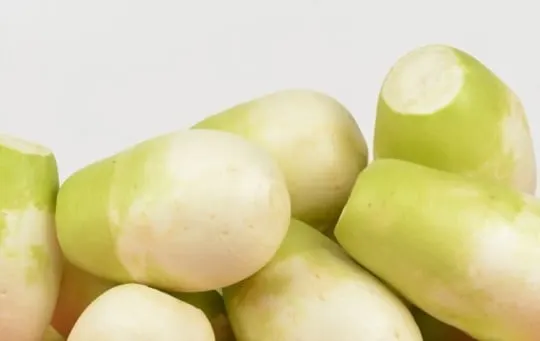
The 5 Best Substitutes for Korean Radish
Ingredients
- Daikon
- Red Radish
- Indian Radish
- Turnips
- Cabbage Heart
Instructions
- Pick your favorite substitute from the list above.
- Follow cooking directions for your selected substitute with the proper ratio of ingredients.

Andrew Gray is a seasoned food writer and blogger with a wealth of experience in the restaurant and catering industries. With a passion for all things delicious, Andrew has honed his culinary expertise through his work as a personal chef and caterer.
His love for food led him to venture into food writing, where he has contributed to various online publications, sharing his knowledge and insights on the culinary world. As the proud owner of AmericasRestaurant.com, Andrew covers a wide range of topics, including recipes, restaurant reviews, product recommendations, and culinary tips.
Through his website, he aims to inspire and educate fellow food enthusiasts, offering a comprehensive resource for all things food-related.

Leave a comment